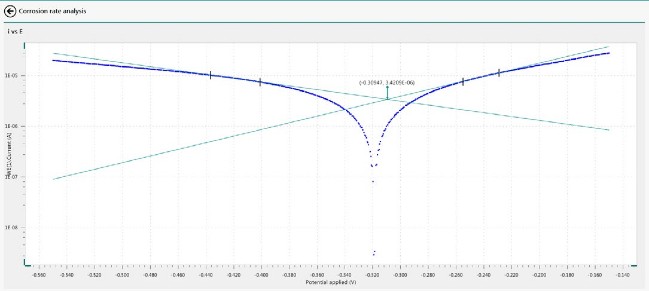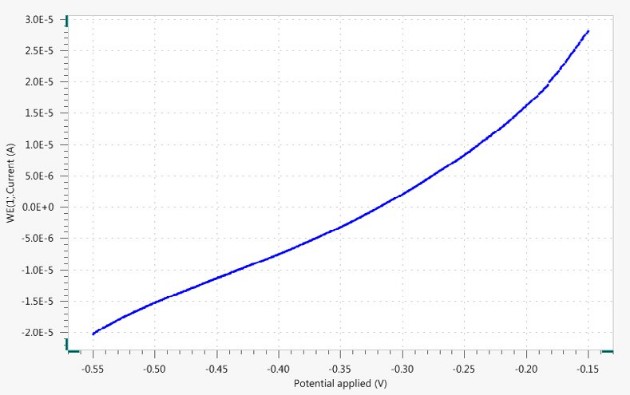Corrosion Parameters by Linear Polarization Resistance (LPR) Measurements
The ASTM G59-97 method explains the use of a potentiodynamic linear sweep measurement to quantify the corrosion processes. Typically, this technique is used to measure and monitor corrosion on a day-to-day basis. A range of voltages are applied to a solid test sample and the corresponding current is measured using a three-electrode setup. First, the polarization resistance is obtained from the slope of the linear sweep plot at zero voltage. Then, a Tafel Slope analysis allows the usage of the Butler-Volmer equation for precise measurements on corrosion currents and corrosion rates.
Every instrument offered by Metrohm is equipped with an LPR protocol. A dedicated LPR analyzer kit that includes all
requirements for conducting a typical ASTM G59-97 test is also available.
Application: Corrosion monitoring and measurements in industries and corrosion labs
Application Notes:

- Measurement of Polarization Resistance (Download)
- Measurement of Corrosion Rates (Download)
Application: Corrosion monitoring and measurements in industries and corrosion labs

Unique Software Features for LPR Measurements

- Protocol for linear polarization with built-in OCP evaluation
- Change voltage or scan rate during a measurement
- Procedure scheduler: for long or multiple runs, experiments can be scheduled with added wait times
- Automated secondary signal creation for direct Tafel plot analysis (I/A2, Log I, etc.)
- High resolution vector graphics with export and printing options
- Automatic calculation of kinetic rate constants
- Direct determination of polarization resistance and corrosion rates
